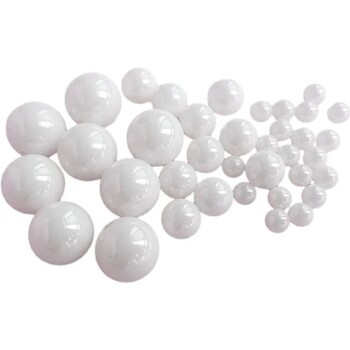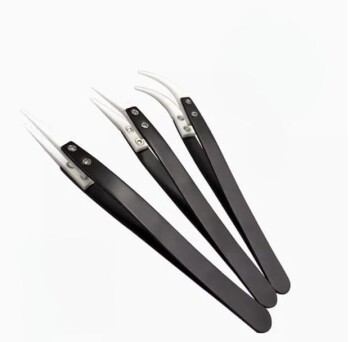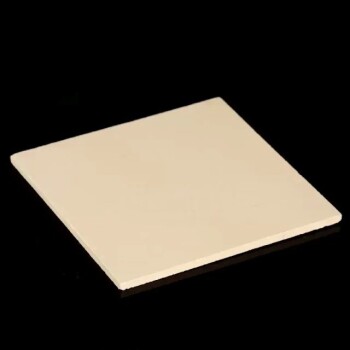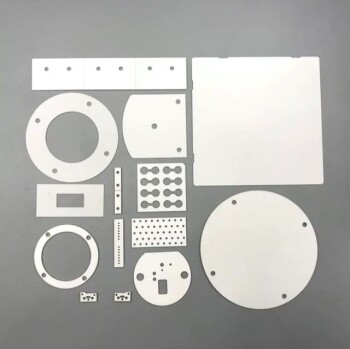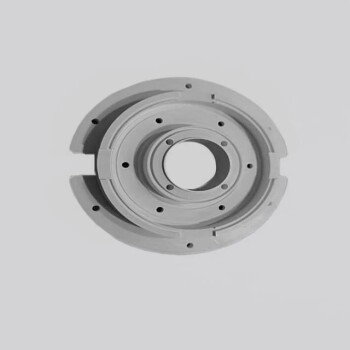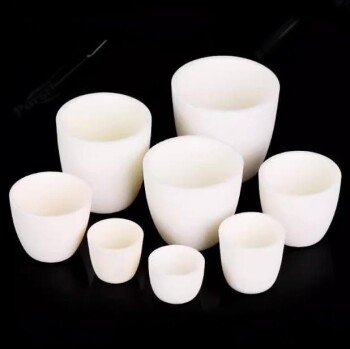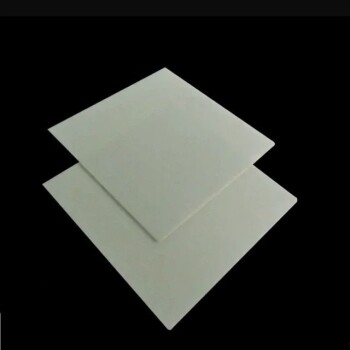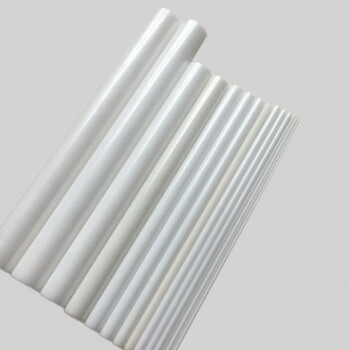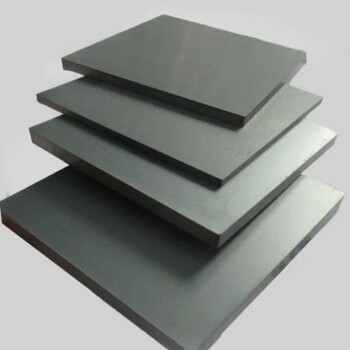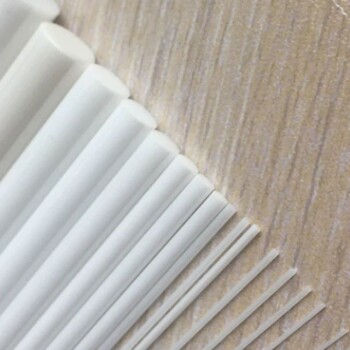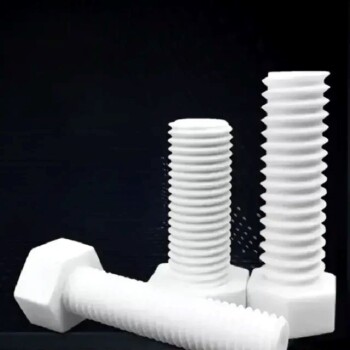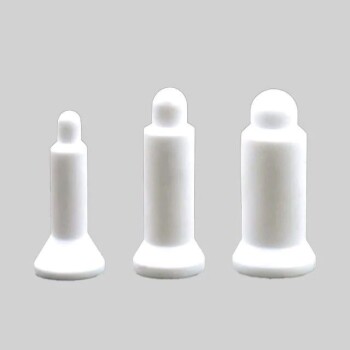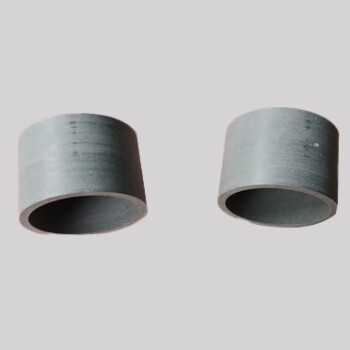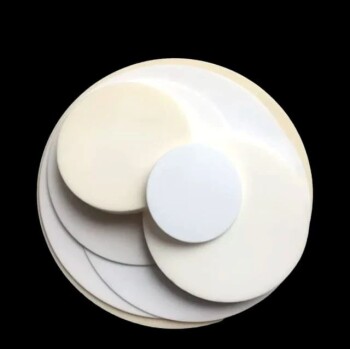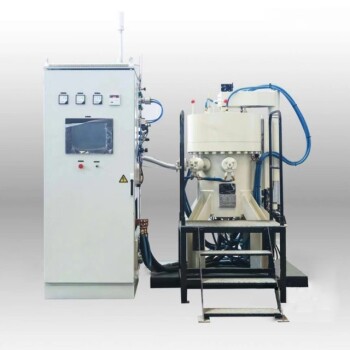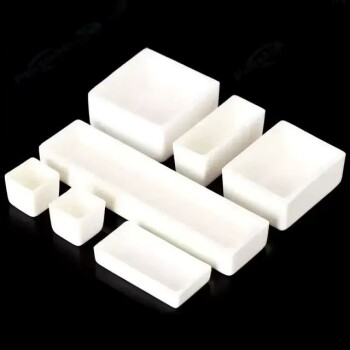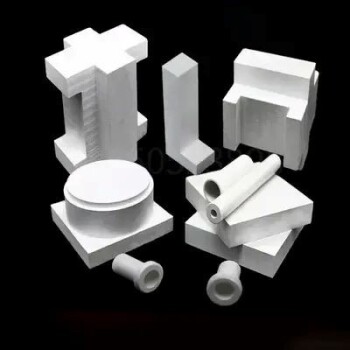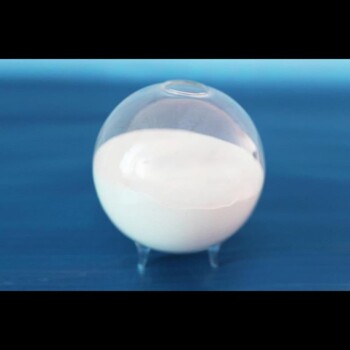Overview of Mechanical Properties
Strength and Hardness
Ceramic materials are renowned for their exceptional strength and hardness, attributes largely attributed to their robust ionic and covalent bonding structures. This bonding mechanism endows ceramics with a hardness that frequently surpasses 1500HV, a threshold that many materials cannot achieve. For example, zirconia ceramic stands out with a hardness rating greater than 9, placing it second only to diamond in terms of hardness.
The high hardness of ceramics is not merely a theoretical advantage but a practical one, significantly impacting their durability and resistance to wear and tear. This property makes ceramics ideal for applications where material integrity must be maintained under severe conditions, such as in cutting tools, armor plating, and high-performance machinery components.
Moreover, the strength of ceramics, often measured in terms of their ability to withstand compressive forces, is equally impressive. This strength, combined with their hardness, positions ceramics as superior alternatives to traditional materials like metals in many high-stress environments. The unique atomic structure of ceramics, characterized by strong covalent and ionic bonds, ensures that they can maintain their structural integrity even under extreme mechanical stress.
In summary, the strength and hardness of ceramic materials are foundational to their widespread use in industries requiring high-performance, durable materials. Their ability to resist deformation and wear, coupled with their exceptional compressive strength, underscores their superiority in many critical applications.
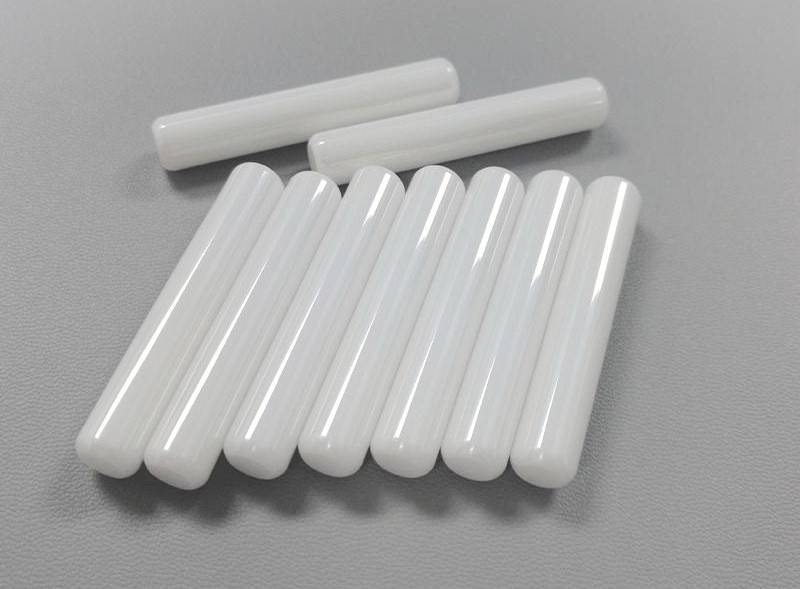
Lack of Plasticity and Toughness
Despite their high compressive strength, ceramics suffer from low tensile strength and exhibit poor plasticity and toughness. This deficiency is primarily attributed to their intricate crystal structures, which limit the number of available slip systems. Slip systems are essential for plastic deformation, allowing materials to deform plastically under stress without fracturing. However, ceramics, with their complex atomic arrangements, have a limited number of these systems, making it difficult for them to deform plastically.
Moreover, the high energy required to generate dislocations in ceramics further exacerbates their lack of plasticity. Dislocations are line defects in the crystal lattice that enable plastic deformation by allowing atoms to slide past each other. In ceramics, the energy needed to create these dislocations is significantly higher compared to metals, which can easily generate and propagate dislocations under stress. This high dislocation generation energy contributes to the brittleness of ceramics, rendering them prone to catastrophic failure under tensile stress.
In summary, the combination of complex crystal structures, limited slip systems, and high dislocation generation energy collectively result in the low tensile strength and poor plasticity and toughness observed in ceramic materials.
Mechanical Properties Indicators
Key Indicators
When evaluating ceramic tile applications, several key indicators must be meticulously assessed to ensure optimal performance and durability. Dimensional deviation and surface quality are foundational, as they directly influence the tile's fit and aesthetic appeal. Water absorption is another critical factor, as excessive absorption can lead to discoloration, warping, and structural degradation over time.
The modulus of rupture and breaking strength are essential mechanical properties that gauge the tile's resistance to bending and breaking under load. These metrics are particularly important in high-traffic areas where the tiles are subject to repeated stress. Thermal shock resistance is vital for tiles exposed to fluctuating temperatures, such as those used in outdoor or industrial settings, ensuring they can withstand thermal cycling without cracking.
Lastly, abrasion resistance is crucial for maintaining the tile's surface integrity and longevity, especially in areas prone to heavy foot traffic or abrasive materials. Each of these indicators plays a distinct yet interconnected role in determining the overall quality and suitability of ceramic tiles for various applications.
| Indicator | Importance |
|---|---|
| Dimensional Deviation | Ensures proper fit and appearance |
| Surface Quality | Influences aesthetic and tactile qualities |
| Water Absorption | Prevents discoloration, warping, and structural degradation |
| Modulus of Rupture | Measures resistance to bending under load |
| Breaking Strength | Gauges resistance to breaking under load |
| Thermal Shock Resistance | Ensures durability under temperature fluctuations |
| Abrasion Resistance | Maintains surface integrity under wear and tear |
These indicators collectively define the mechanical and structural integrity of ceramic tiles, guiding manufacturers and consumers in selecting the most appropriate materials for specific applications.
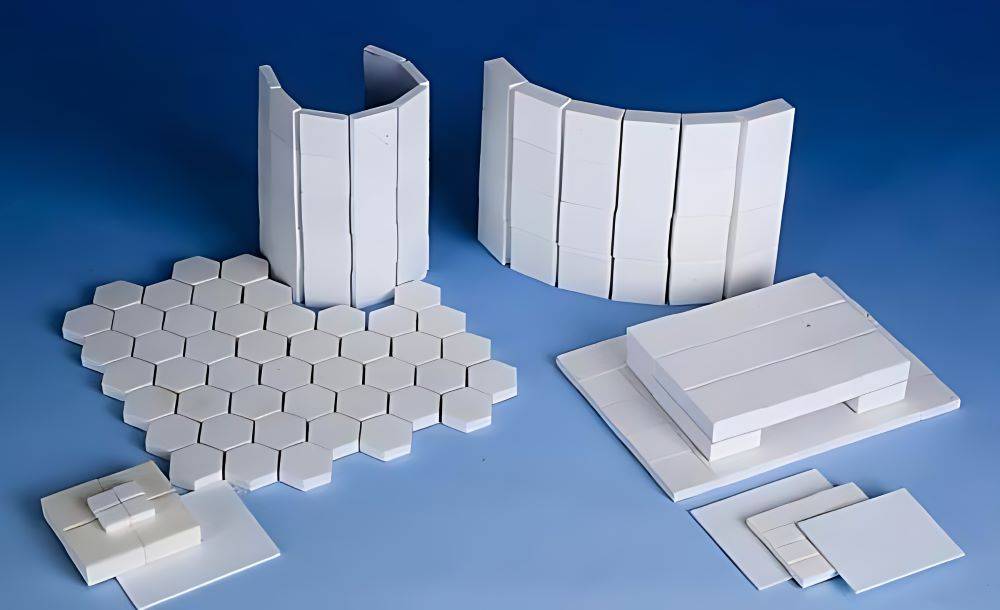
Comparison with Metals
Ceramics stand out for their superior modulus of elasticity and hardness when compared to metals. This is largely due to their strong ionic and covalent bonding, which results in hardness values often exceeding 1500 HV, with zirconia ceramics reaching a hardness of over 9, second only to diamond. However, this impressive hardness comes at a cost: ceramics exhibit significantly lower tensile strength and negligible plastic deformation at room temperature. Unlike metals, which can undergo substantial plastic deformation before failure, ceramics remain brittle, making them susceptible to catastrophic fractures under tensile stress.
| Property | Ceramics | Metals |
|---|---|---|
| Modulus of Elasticity | Higher | Lower |
| Hardness | Higher | Lower |
| Tensile Strength | Lower | Higher |
| Plastic Deformation | Almost none | Significant |
This dichotomy in properties highlights the fundamental differences in the mechanical behavior of ceramics and metals. While ceramics are ideal for applications requiring high hardness and wear resistance, their lack of plasticity and toughness limits their use in situations where tensile strength and ductility are paramount. Understanding these trade-offs is crucial for selecting the right material for specific engineering applications.
Factors Affecting Mechanical Properties
Effect of Temperature
Temperature plays a pivotal role in determining the mechanical behavior of ceramics, particularly affecting their elastic modulus. As temperature rises, the atomic spacing within the ceramic structure increases due to thermal expansion. This expansion leads to a decrease in the elastic modulus, as the interatomic forces that provide stiffness weaken with increased distance between atoms. The phenomenon can be visualized as the material becoming more compliant and less rigid as it heats up.
For instance, in high-temperature applications such as gas turbines or furnaces, the thermal expansion of ceramics can significantly alter their mechanical properties. At elevated temperatures, the reduction in elastic modulus can affect the material's ability to withstand mechanical stresses, potentially leading to structural failures if not properly accounted for in the design phase.
| Temperature Range | Elastic Modulus Change | Implications |
|---|---|---|
| Room Temperature | High Elastic Modulus | Excellent stiffness and resistance to deformation. |
| Elevated Temperatures | Decreased Elastic Modulus | Reduced stiffness, potential for increased deformation under stress. |
The relationship between temperature and elastic modulus is not linear but rather follows a complex pattern influenced by the specific material composition and microstructure. Advanced ceramic materials, such as those used in aerospace engineering, often undergo rigorous thermal analysis to predict and mitigate these effects, ensuring their performance under extreme conditions.
In summary, while ceramics exhibit superior mechanical properties at ambient temperatures, their performance can degrade significantly at higher temperatures due to changes in atomic spacing. Understanding and managing this temperature-dependent behavior is crucial for the effective use of ceramics in various high-temperature applications.
Role of Porosity
Porosity plays a pivotal role in determining the elastic modulus of ceramics, with a direct correlation between the level of porosity and the material's mechanical properties. As porosity increases, the ceramic's elastic modulus experiences a steep decline. This phenomenon can be attributed to the presence of voids within the material, which act as stress concentrators, leading to a reduction in the overall stiffness and strength of the ceramic.
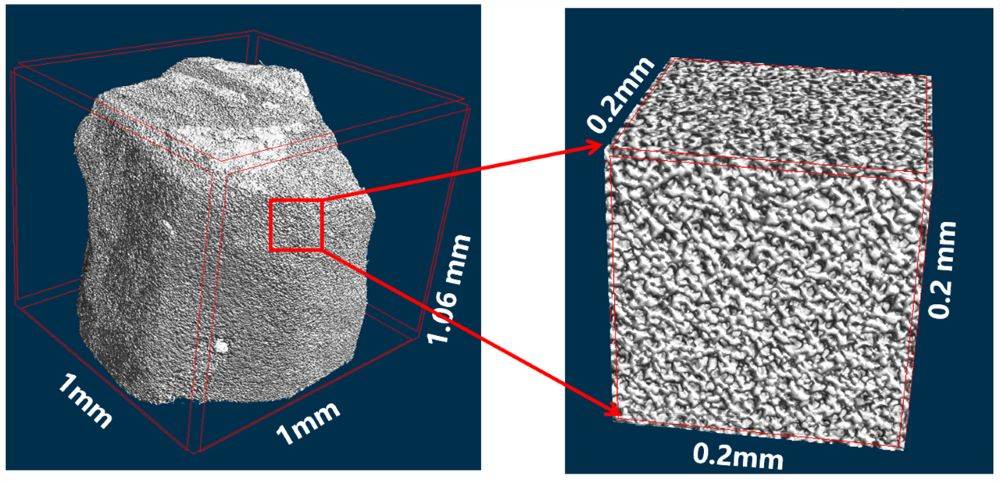
Advanced sintering techniques have emerged as effective methods to mitigate the adverse effects of porosity. These techniques, which include hot isostatic pressing (HIP) and field-assisted sintering technology (FAST), can significantly reduce the porosity levels in ceramics. By minimizing these voids, the mechanical properties of the ceramic, such as its elastic modulus and overall strength, can be substantially improved.
| Sintering Technique | Effect on Porosity | Impact on Elastic Modulus |
|---|---|---|
| Hot Isostatic Pressing (HIP) | Reduces porosity by applying uniform pressure | Increases elastic modulus |
| Field-Assisted Sintering Technology (FAST) | Enhances densification | Boosts mechanical properties |
In summary, while porosity poses a significant challenge to the mechanical integrity of ceramics, modern sintering processes offer viable solutions to enhance their structural and mechanical performance.
Grain Size Effect
Smaller grain size in ceramics is a critical factor that significantly enhances their strength. This phenomenon can be attributed to the Hall-Petch relationship, which posits that as the grain size decreases, the material's yield strength increases. This is primarily due to the increased number of grain boundaries, which act as barriers to dislocation movement, thereby impeding plastic deformation.
However, the enhancement of ceramic strength is not solely dependent on grain size. Other factors, such as impurities and porosity, also play substantial roles in determining the overall mechanical properties of ceramics. Impurities can act as stress concentrators, leading to localized weaknesses that may precipitate failure. Porosity, on the other hand, can significantly reduce the material's density and, consequently, its mechanical integrity. Higher porosity levels can lead to a sharp decrease in the elastic modulus and overall strength, as the presence of voids within the material structure weakens its load-bearing capacity.
To illustrate the interplay between grain size and these other factors, consider the following table:
| Factor | Effect on Strength | Mechanism |
|---|---|---|
| Grain Size | Positive | Increased grain boundaries impede dislocation movement |
| Impurities | Negative | Act as stress concentrators, leading to localized weaknesses |
| Porosity | Negative | Reduces material density, leading to decreased load-bearing capacity |
In summary, while reducing grain size is an effective strategy to boost ceramic strength, it must be balanced with efforts to minimize impurities and porosity to achieve optimal mechanical properties. Advanced sintering processes, such as hot pressing and spark plasma sintering, can be employed to reduce porosity and refine grain size, thereby enhancing the overall strength and durability of ceramic materials.
Methods to Improve Mechanical Properties
Nanomaterials Addition
The incorporation of nano-alumina into ceramic materials has proven to be a transformative strategy in enhancing their overall performance. By integrating these nanoscale particles, the sintering process can be significantly optimized. Specifically, the addition of nano-alumina lowers the required sintering temperature, which not only reduces energy consumption but also minimizes the risk of thermal degradation during the manufacturing process.
Moreover, the densification of ceramic materials is markedly improved with the inclusion of nano-alumina. This enhancement in densification leads to a more uniform and compact microstructure, which is crucial for boosting the material's mechanical properties. The improved microstructure translates into higher flexural strength and fracture toughness, making the ceramics more resilient against mechanical stresses and sudden impacts.
In summary, the strategic addition of nano-alumina not only streamlines the production process but also imparts superior mechanical properties to ceramic materials, making them more versatile and reliable in various industrial applications.
Strengthening by Confinement Effect
The confinement effect, which includes both lateral and cover constraints, plays a pivotal role in enhancing the mechanical properties of ceramics, particularly under compressive loading conditions. This effect leverages the inherent brittleness of ceramics to mitigate fracture propagation, thereby significantly increasing their overall strength.
Lateral constraints, often achieved through the application of external forces or through the design of the material's structure, work to limit the lateral expansion of the ceramic material when subjected to compressive forces. This limitation prevents the formation of microcracks that could lead to catastrophic failure. Similarly, cover constraints, which can be implemented through the use of protective coatings or encapsulation, shield the ceramic from environmental factors that could induce stress and promote crack initiation.
The effectiveness of confinement in preventing brittle fracture is well-documented. For instance, in high-stress environments such as those found in industrial machinery or aerospace applications, the confinement effect can transform the failure behavior of ceramics from a sudden, catastrophic event to a more controlled, gradual process. This shift not only enhances the reliability of ceramic components but also extends their operational lifespan.
Moreover, the combination of lateral and cover constraints can create a synergistic effect, amplifying the benefits of each individual method. This dual approach ensures that the ceramic material remains robust and resilient, even under extreme conditions. The result is a material that not only maintains its high compressive strength but also exhibits improved resistance to fracture, making it suitable for a wider range of demanding applications.
New Methods

Embedding 2D graphene arrays into ceramic matrices represents a groundbreaking approach to enhancing mechanical properties. This method leverages the unique structural characteristics of graphene, a material known for its exceptional strength and flexibility. By integrating these graphene arrays, the ceramic matrix undergoes a transformative change, shifting from a state of catastrophic fracture to one of stable propagation behaviors. This integration not only significantly boosts the mechanical toughness and strength of the ceramics but also introduces a more controlled and predictable fracture mechanism.
The process involves carefully aligning graphene sheets within the ceramic structure, creating a network that can absorb and distribute stress more effectively. This alignment is crucial for maximizing the benefits of graphene, as it ensures that the material's inherent properties are fully utilized. The result is a ceramic material that exhibits superior resistance to crack initiation and propagation, making it ideal for applications where durability and reliability are paramount.
Moreover, the addition of graphene arrays can lead to a multifaceted improvement in mechanical properties. For instance, the enhanced toughness allows the material to withstand higher stress levels before failure, while the increased strength ensures that the material can bear greater loads without deforming. This dual enhancement not only broadens the application scope of ceramics but also opens new avenues for research and development in material science.
In summary, the integration of 2D graphene arrays into ceramic matrices offers a novel and effective method to significantly improve mechanical toughness and strength, thereby transforming the fracture behavior of ceramics and paving the way for more robust and reliable materials.
Related Products
- Precision Machined Zirconia Ceramic Ball for Engineering Advanced Fine Ceramics
- Engineering Advanced Fine Ceramics Head Tweezers with Pointed Elbow Zirconia Ceramic Tip
- Precision Machined Yttria Stabilized Zirconia Ceramic Plate for Engineering Advanced Fine Ceramics
- Custom-Made Alumina Zirconia Special-Shaped Ceramic Plates for Engineering Advanced Fine Ceramics Processing
- Custom Boron Nitride (BN) Ceramic Parts
Related Articles
- Understanding Cold Isostatic Pressing: Process, Advantages and Types
- An In-depth Study of Isostatic Presses: Types, Applications, and Advantages
- A Guide to Choosing the Right Temperature for Warm Isostatic Press
- Cold Isostatic Pressing for Medical Applications Challenges and Solutions
- How to Achieve Uniform Pressure with Warm Isostatic Press

